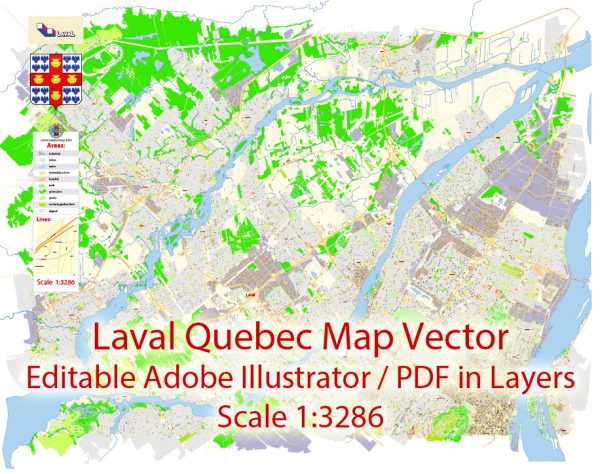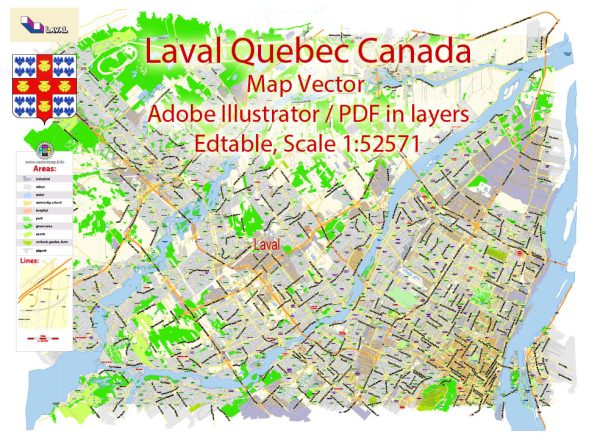Laval is a city located in the province of Quebec, Canada. It is situated in the southwestern part of Quebec, just to the north of Montreal, which is the largest city in the province. Here is a geographical description of Laval:
- Location: Laval is positioned on the Island of Montreal, separated from the island of Montreal by the Rivière des Prairies (River of Prairies). It is surrounded by water on three sides, with the Rivière des Prairies to the south, the Rivière des Mille Îles (Thousand Islands River) to the north, and the Rivière des Prairies again to the west. To the east, it is connected to the city of Terrebonne.
- Size: Laval is the third-largest city in Quebec by population and has a total land area of approximately 247 square kilometers, making it the 13th largest city by land area in Canada.
- Terrain: Laval’s landscape is relatively flat, characterized by plains and gentle slopes. It is part of the greater Montreal region, which includes the Island of Montreal and several surrounding suburbs.
- Islands: Laval encompasses several smaller islands in addition to the main island. Notable ones include Île Jésus, Île Bizard, and Îles Laval. These islands are surrounded by various rivers and water bodies, providing opportunities for recreational activities and scenic views.
- Green Spaces: Laval boasts numerous parks, green spaces, and nature reserves, offering residents and visitors opportunities for outdoor activities, including hiking, picnicking, and cycling. Parc de la Rivière-des-Mille-Îles and Parc de la Rivière-des-Prairies are popular destinations for enjoying the natural beauty of the area.
- Waterways: The city’s proximity to rivers and lakes makes it a suitable location for water-based recreational activities. Boating, fishing, and kayaking are popular pastimes in Laval due to its numerous waterways.
- Climate: Laval experiences a humid continental climate, characterized by cold winters and warm summers. Winters are snowy, while summers are generally warm and humid. The city enjoys four distinct seasons, with colorful foliage in the fall and vibrant blooms in the spring.
- Urban Development: Laval has seen substantial urban development over the years, with residential neighborhoods, commercial districts, and industrial areas. It is well-connected to Montreal by various road bridges and tunnels, making it an integral part of the greater Montreal metropolitan area.
Laval’s geography, with its proximity to waterways and the city’s efforts to maintain green spaces, makes it an attractive place to live and visit for those who appreciate both urban amenities and natural beauty.



 Author: Kirill Shrayber, Ph.D.
Author: Kirill Shrayber, Ph.D.